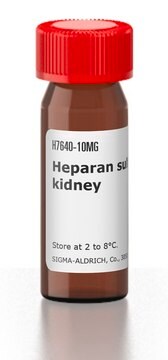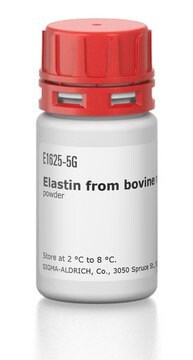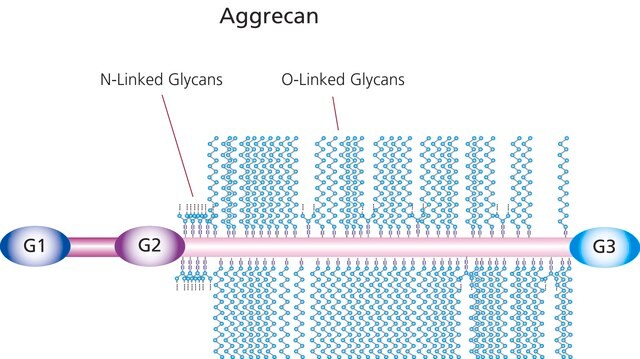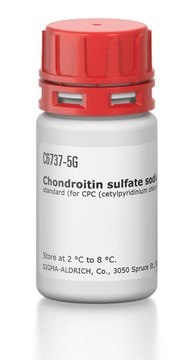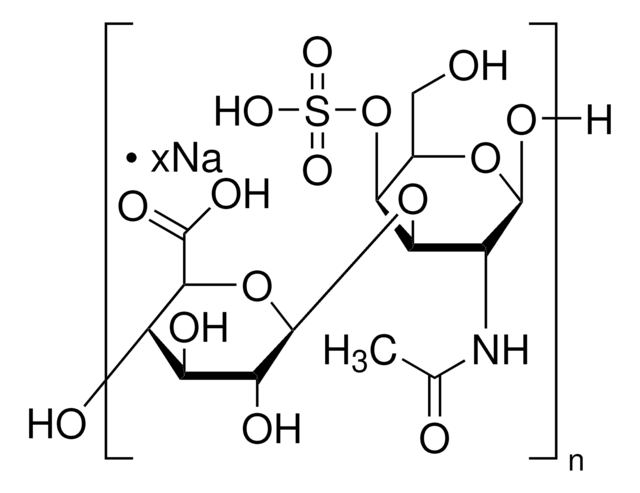H4777
Heparan sulfate proteoglycan
≥400 μg/mL glycosaminoglycan
Sinónimos:
HSPG
About This Item
Productos recomendados
biological source
mouse (Engelbreth-Holm-Swarm mouse sarcoma basement membrane)
Quality Level
description
For cell culture use.
Isolated from basement membrane of Engelbreth-Holm-Swarm mouse sarcoma.
Solution in 50 mM Tris HCl, 150 mM NaCl, 1 mM EDTA, 0.1 mM PMSF, pH 7.4, containing ≥400 μg protein per ml.
form
solution
mol wt
≥400 kDa
packaging
pkg of 0.1 mg
concentration
≥400 μg/mL glycosaminoglycan
technique(s)
cell culture | mammalian: suitable
impurities
≥100 μg/mL Uronic acid
NCBI accession no.
UniProt accession no.
binding specificity
Peptide Source: Collagen Type IV
Peptide Source: Fibronectin
Peptide Source: Laminin
shipped in
dry ice
storage temp.
−20°C
Gene Information
mouse ... Hspg2(15530)
General description
Application
- in phosphate buffered saline (PBS) and added to fresh citrated blood samples to achieve trauma-equivalent concentrations in a research study
- solid phase binding assay
- for fabrication of extracellular matrix (ECM) microarray slides
Biochem/physiol Actions
Components
Caution
Preparation Note
Storage Class
11 - Combustible Solids
wgk_germany
WGK 3
flash_point_f
Not applicable
flash_point_c
Not applicable
ppe
Eyeshields, Gloves, type N95 (US)
Certificados de análisis (COA)
Busque Certificados de análisis (COA) introduciendo el número de lote del producto. Los números de lote se encuentran en la etiqueta del producto después de las palabras «Lot» o «Batch»
¿Ya tiene este producto?
Encuentre la documentación para los productos que ha comprado recientemente en la Biblioteca de documentos.
Los clientes también vieron
Artículos
There are five identified glycosaminoglycan chains (see Figure 1): Hyaluronan is not sulfated, but the other glycosaminoglycan chains contain sulfate substituents at various positions of the chain.
Glycosaminoglycans are large linear polysaccharides constructed of repeating disaccharide units.
Nuestro equipo de científicos tiene experiencia en todas las áreas de investigación: Ciencias de la vida, Ciencia de los materiales, Síntesis química, Cromatografía, Analítica y muchas otras.
Póngase en contacto con el Servicio técnico